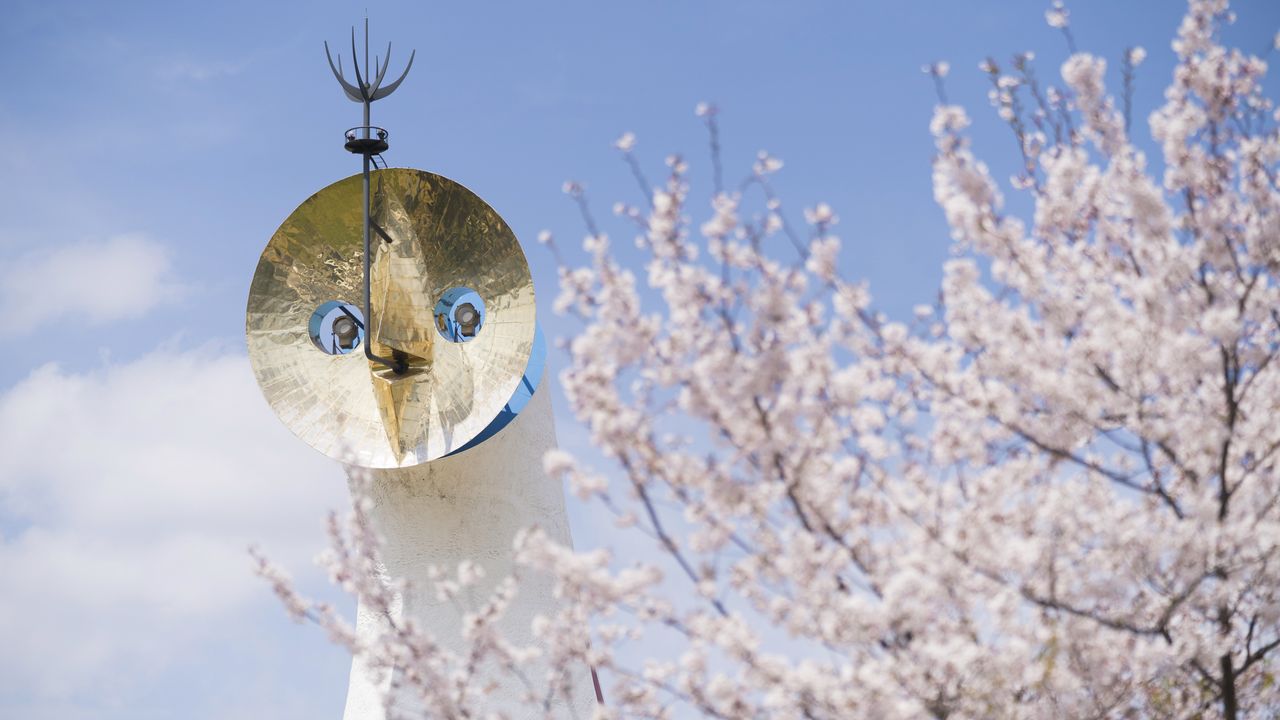
Cherry Blossoms in Osaka
Guideto Japan
Travel Japan in Video- English
- 日本語
- 简体字
- 繁體字
- Français
- Español
- العربية
- Русский
The Best-Known Sakura Sites in Osaka
Among the best-known locations for cherry blossoms in Osaka are Osaka Castle Park, in Chūō-ku, and Expo ’70 Commemorative Park, in the city of Suita, both of which are included on the list of top 100 cherry blossom sites in Japan. The cherry trees in Osaka Castle Park are also considered the reference trees for the area; the timing of the Japan Meteorological Agency’s official announcement of the blooming of cherry blossoms in the Osaka area depends on when these reference trees bloom.
Osaka Castle was originally constructed in 1583 by Toyotomi Hideyoshi (1537–98). The castle donjon was rebuilt in 1931. A municipal park encompassing over 100 hectares spreads out from the donjon structure, and from late March to early April, over 3,000 cherry trees bloom on these grounds. There are numerous varieties to see here, including Yoshino cherry trees, wild cherry trees, Japanese garden trees, weeping cherries, and yaezakura with multipetalled, overlapping blossoms. The Nishinomaru-teien garden, not far from the donjon and home to some 300 trees of its own, is especially popular for blossom-viewing.

Brilliant blossoms highlight the donjon of Osaka Castle.
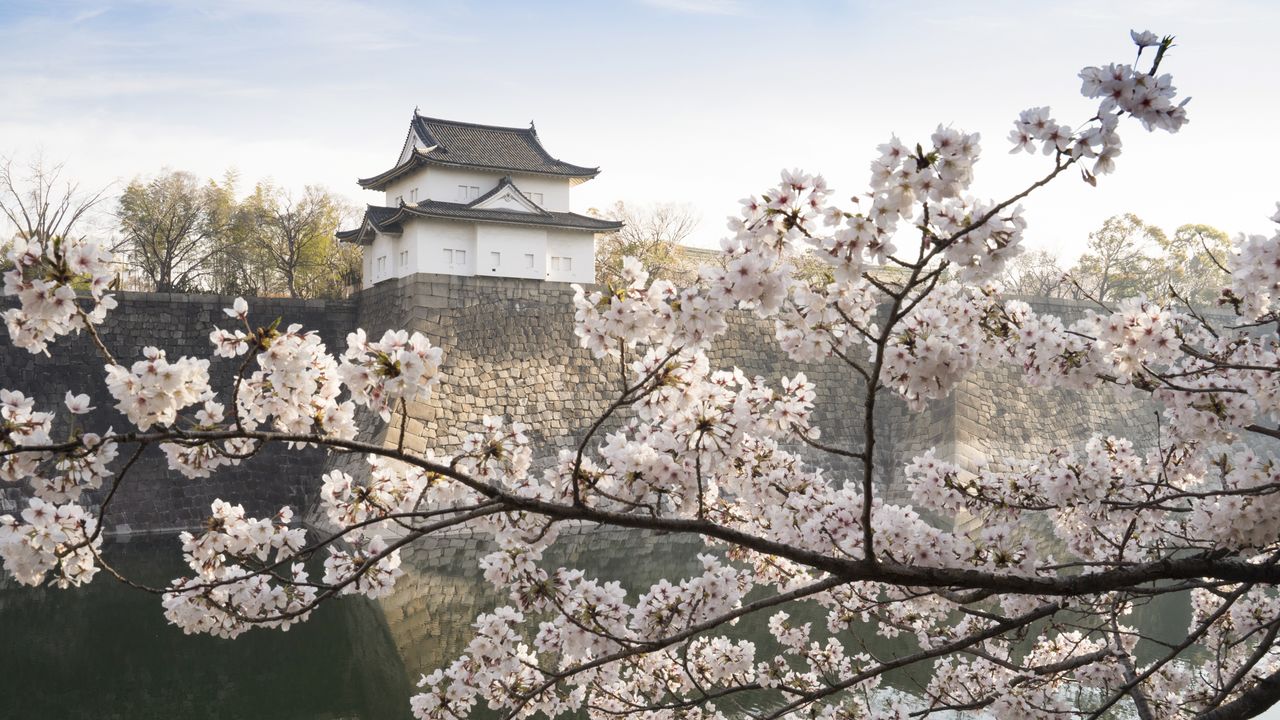
The turret, stone wall, and reflection in the moat combine elegantly with these Yoshino blossoms.
Expo ’70 Commemorative Park was established on the grounds where the Japan World Exposition, Osaka 1970 (Expo ’70), was held. There are some 5,500 cherry trees in nine varieties planted here, Yoshino cherries chief among them. There are plenty of noteworthy flower-viewing sites to be found here. One not to miss is the combination of blossoms with the Tower of the Sun, the sculpture created by artist Okamoto Tarō to be the defining symbol of the Expo. Standing 70 meters in height, the golden visage atop the tower appears to be peering over the tops of the pink cherry blossoms, a sight sure to inspire the shutterbug in any visitor. Best viewing is late March through early April, although select varieties, including Japanese garden cherry tree blossoms, may remain in bloom through mid-April.
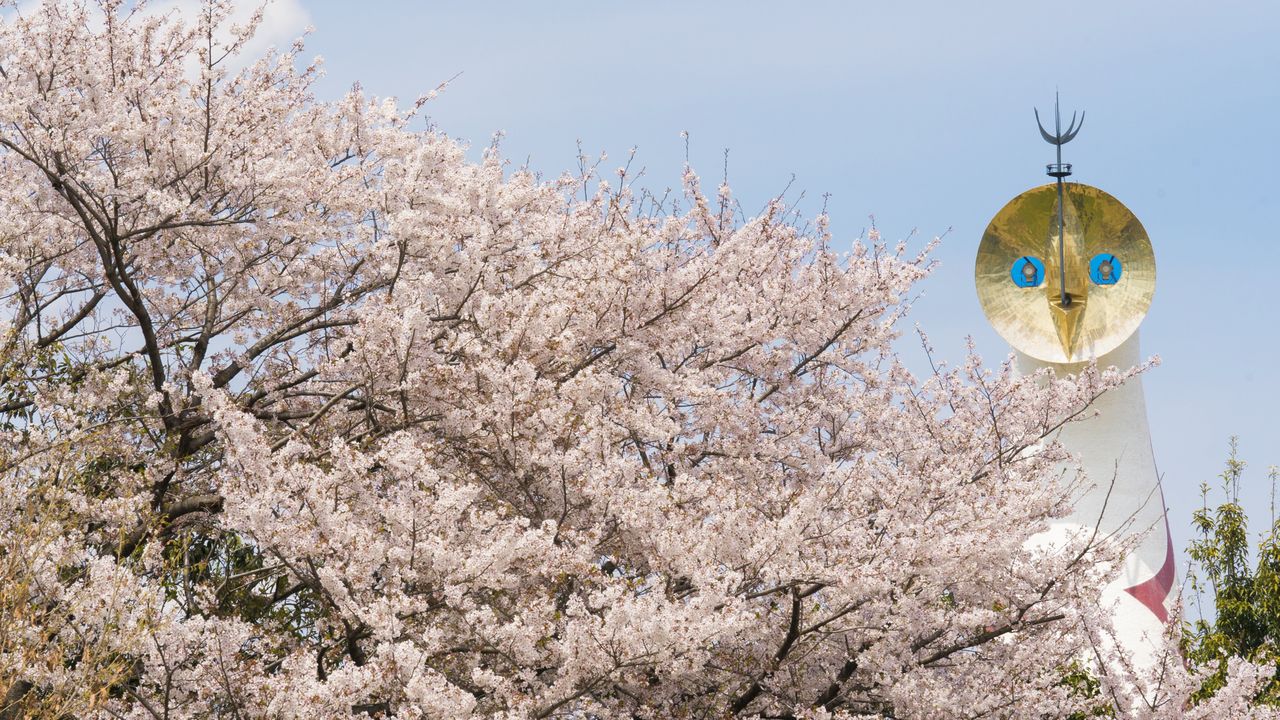
The Sun Tower shows its visage above a mass of Yoshino cherry blossoms.
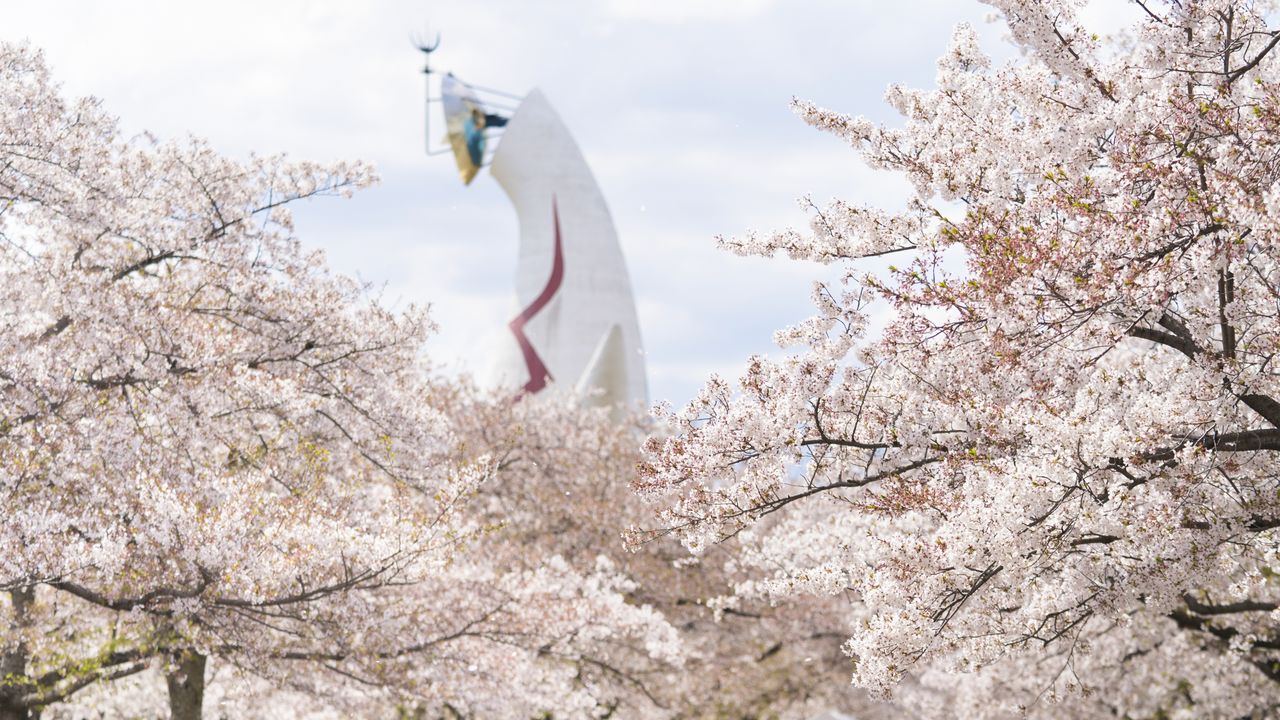
The Sun Tower peers over the blossoms from some 70 meters above ground, making it clearly visible from most of the park.
For More Relaxed Blossom-Viewing
Sayamaike Park, in the city of Sayama, boasts some of the earliest blossom-viewing in Osaka. Some 1,000 cherry trees of the early-blooming koshi-no-higan (Prunus pendula var. koshiensis) variety are planted along the walking path around the park’s pond. These trees bloom at the same as the Thunberg spirea trees, which bloom with many small white flowers. From late March to mid-April, visitors can stroll at ease around the pond, surrounded in pink cherry blossoms, white spirea blossoms, and the grassy green grounds.
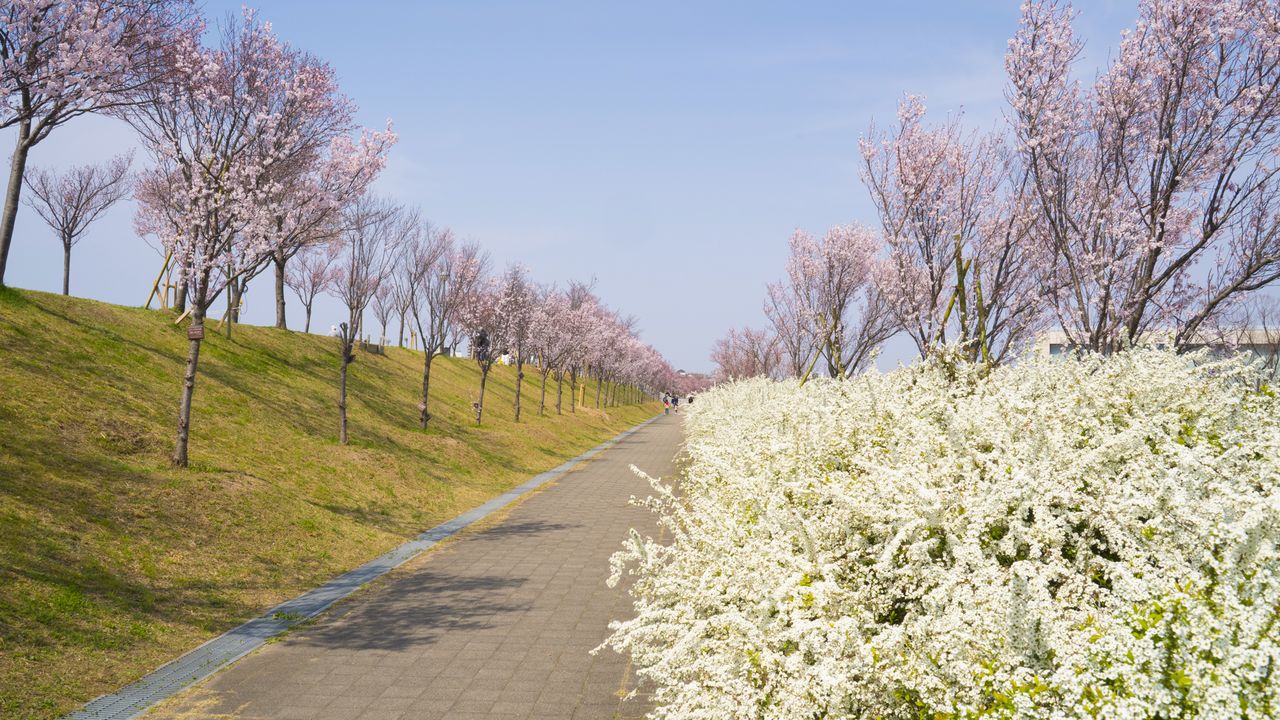
Cherry and spirea trees in bloom along the walking path, near the Osaka Prefectural Sayamaike Museum.
Included together with Sayamaike Park on the list of top 100 historical Japanese parks is Daisen Park, in Sakai-ku, Sakai. This park is located just south of Daisen Kofun, the burial site of Emperor Nintoku (early fifth century). There are some 1,000 cherry trees in 51 varieties planted here, the best viewing of which is late March to early April. They bloom mostly along the Sakura-kaidō lane that traverses the wide grassy field at the center of the park, with the drooping, multilayered yae-beni-shidare variety being especially acclaimed for its beauty.
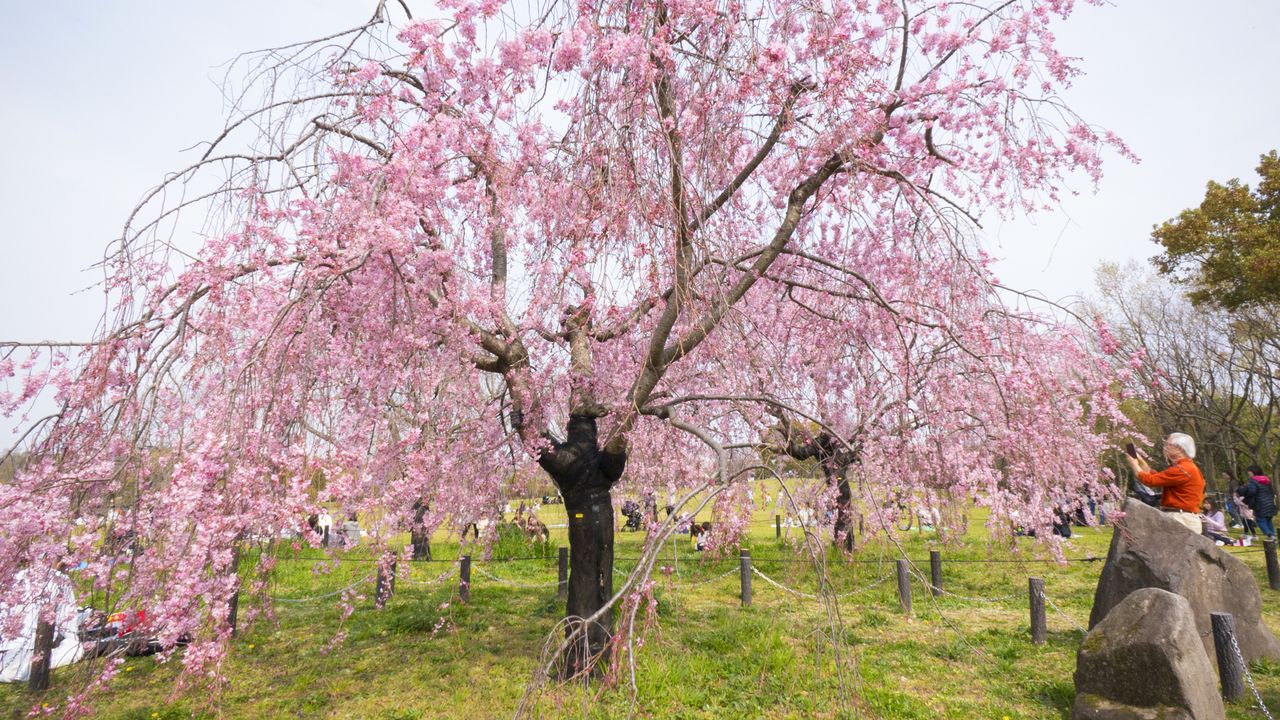
The yae-beni-shidare trees, distinguished by their dark pink blossoms, are planted in profusion along the Sakura-kaidō lane.
Nagai Park, in Osaka’s Higashi-Sumiyoshi-ku, is home to the Nagai Athletics Stadium (Yanmar Stadium Nagai), the home field of Cerezo Osaka, part of Japan’s J1 soccer league, and the finish site for the Osaka Women’s Marathon. The park is also a popular place to go to exercise for general fitness, with a swimming pool and training center provided on the grounds for public use. The Nagai Botanical Garden, in the east side of the park, with its lush natural scenery, is known for cherry blossom viewing in spring. It thus seems only logical that it would be in the home territory of a team called Cerezo, Spanish for “cherry.” Some 500 cherry trees in some 20 varieties bloom from late March to early April here, primarily in the botanical garden and the Omoide-no-Mori, the “Forest of Memories.”
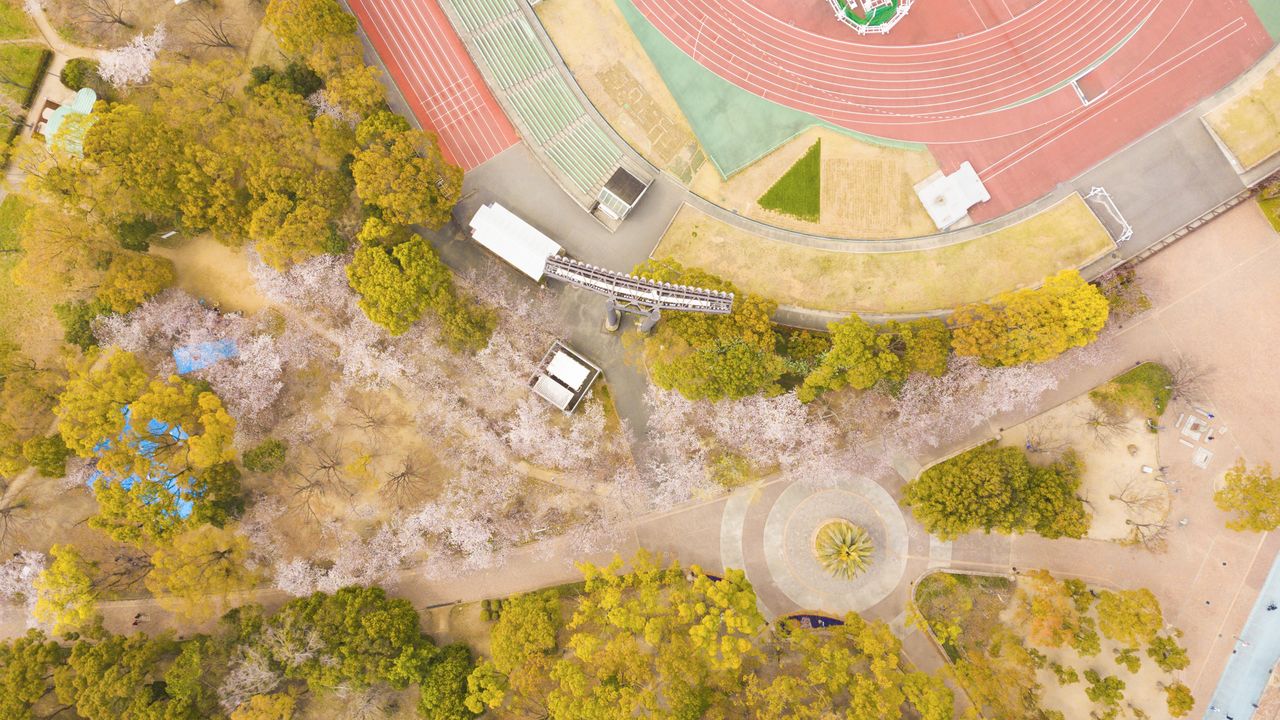
The Omoide-no-Mori seen from above. Here, visitors can jog beneath the blossoms.
Cherry Blossoms Lit Up by Night
Kishiwada Castle is a landmark of the city that shares its name, and is known for its pageant floats. Some 170 Yoshino cherry trees, blooming chiefly around the castle moat, give brilliant color to the stone wall and the three-tier, three-story donjon, which was rebuilt in 1954. The Kishiwada Castle Festival takes place annually during sakura season, with the castle donjon and the cherry trees floodlit after sundown.
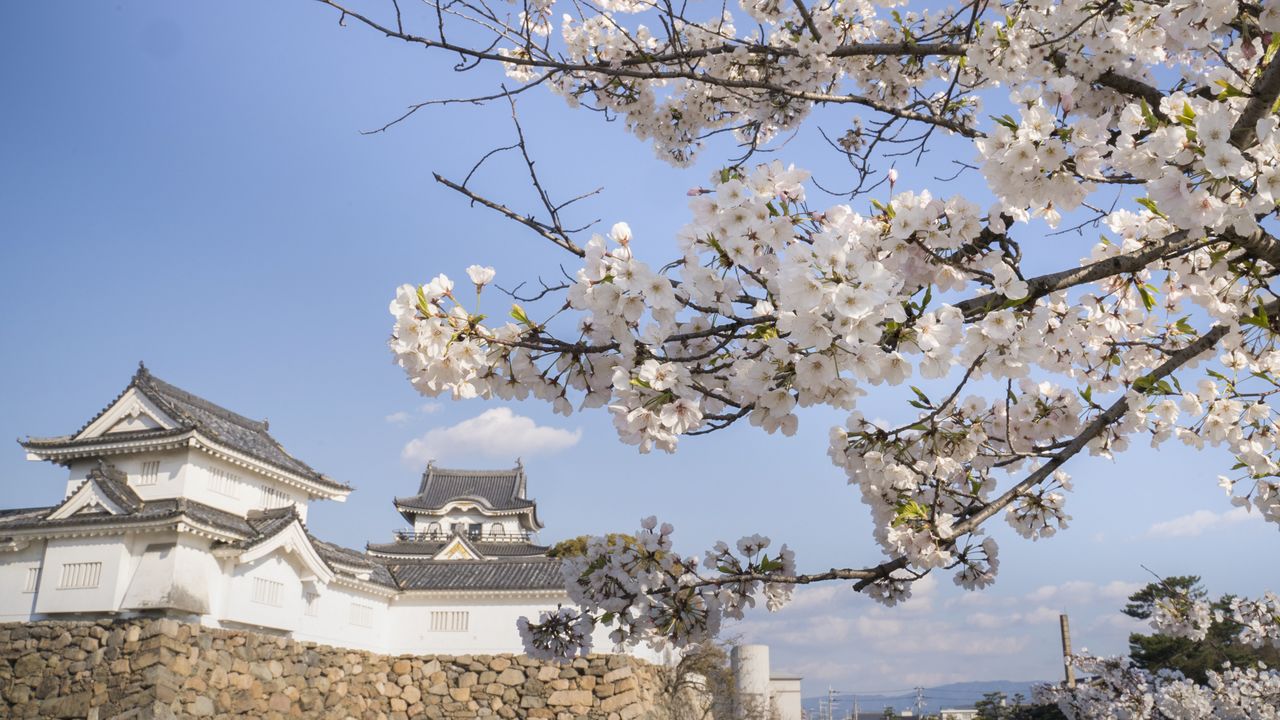
While Kishiwada Castle is usually open from 10:00 am to 5:00 pm, visitors are welcome until 8:30 pm when the Castle Festival is in progress.
Yamanakadani, a ravine in Hannan—a city near the border of Osaka and Wakayama Prefectures—is where some 1,000 cherry trees, mainly of the Yoshino and wild cherry varieties, magnificently line the Yamanaka River. The trees are also floodlit after sundown during the best viewing period of late March through mid-April. The Yamanakadani Cherry Blossom Festival takes place annually at the Wanpaku-Ōkoku park near Yamanakadani Station on the JR Hanwa Line, and crowds of blossom-viewers visit during this period.
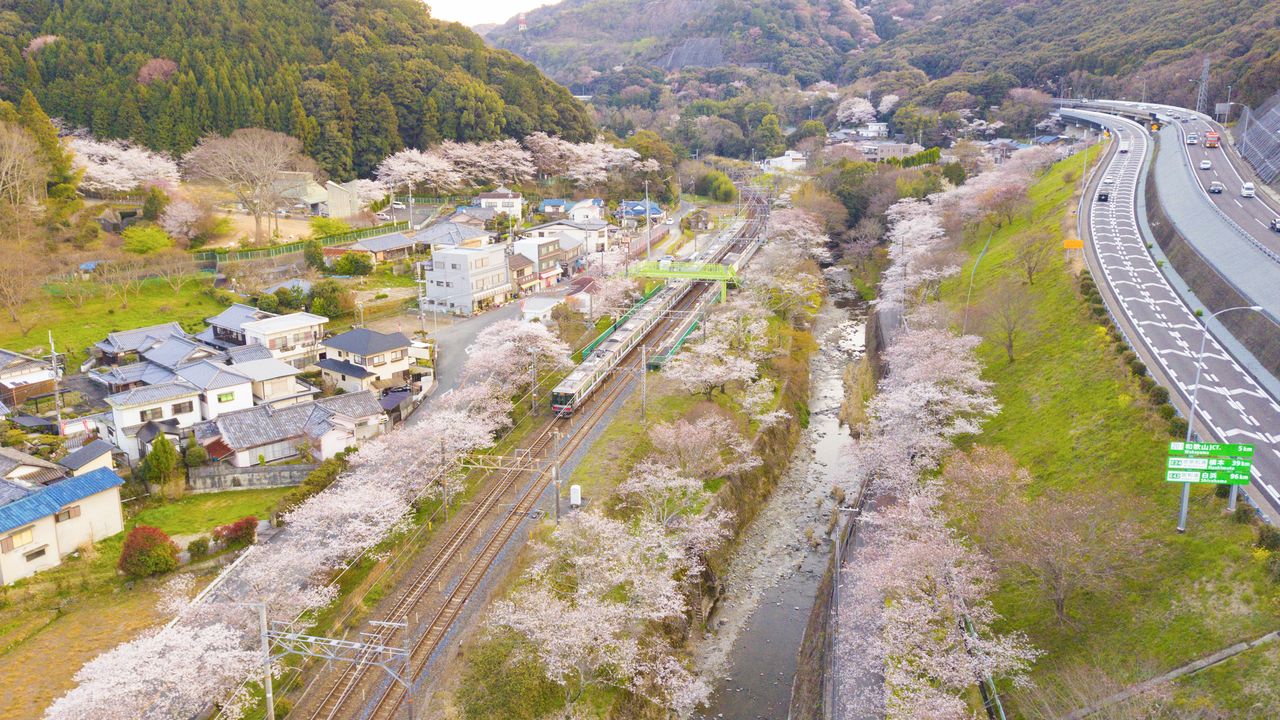
The rows of flowering trees are visible from the Hanwa Line trains.
First held in 1883, the Cherry Blossom Viewing event at the Osaka Mint, in Kita-ku, Osaka, has long been a beloved local harbinger of spring. Each year at peak cherry blossom viewing time, a route within the facilities of the Mint is opened to the public for one week only, along a roughly 560 meter-stretch of the old Yodo River. The site is known to be the last blossom-viewing vista in the area, marking the end of cherry-blossom season with mostly late-blooming wild cherry trees, which bloom later than the Yoshino trees. In 2019, 338 trees in 134 varieties bloomed at this site, including rare cultivars hardly ever found anywhere else, such as ōdemari (Japanese snowball tree) and kodemari (Reeve’s spiria). The area is open until 9:00 pm, and is softly lit after dark, making the cherry trees seem truly fascinating by night. The site is on the list of top 100 cherry tree sites in Japan, despite the limited duration of its blooming period.
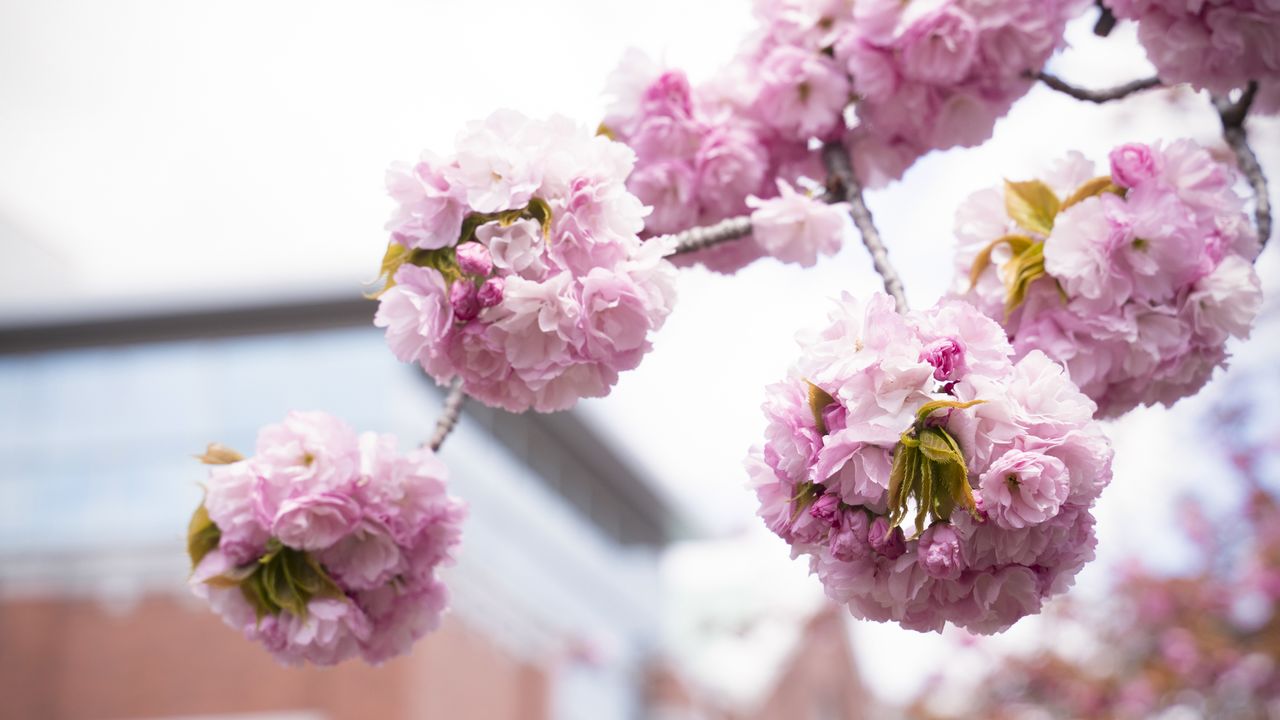
Each year, one type of cherry tree is selected from among all the many varieties planted at the Mint and declared Flower of the Year. In 2019, the chosen tree was benitemari, which gets its name from the crimson (beni) flowers that blossom in a shape reminiscent of traditional temari knitted balls.
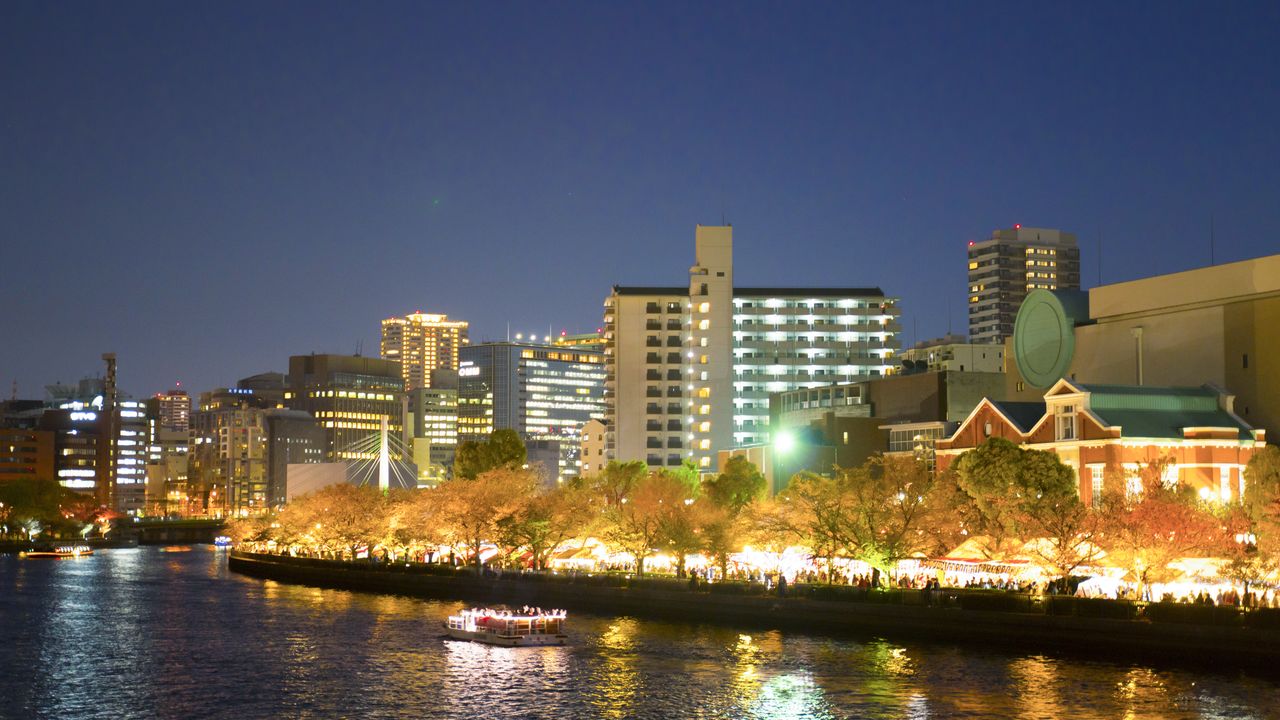
Some 700,000 people visit this site annually during its week-long blossoming duration. Many visitors wait until after dark specifically to see the cherries by night.
(Originally published in Japanese. Reporting and text by Fujii Kazuyuki, 96Box. Photographs by Kuroiwa Masakazu and Fujii Kazuyuki, 96Box. Banner photo: Cherry blossoms together with the Tower of the Sun.)
Osaka tourism Cherry Blossoms hanami Kansai Osaka Castle cherry blossoms in Japan